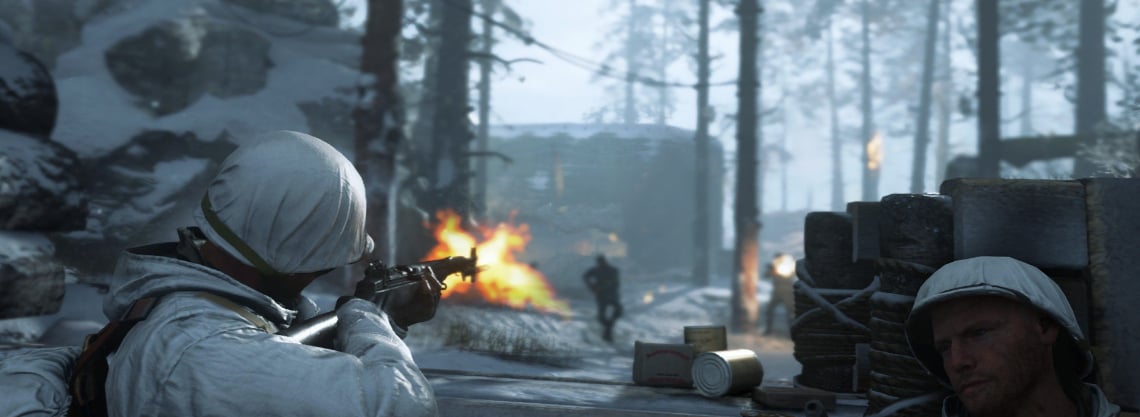
Related Stories
Why Call of Duty: WWII Was the Best Competitive CoD of the Last 8 Years
When Call of Duty: WWII launched in 2017, it received mixed reactions. Critics and casual players often dismissed it as "boring" or “too basic,” citing its muted color palette and lack of advanced movement. But for the competitive scene, WWII delivered something special—something we hadn’t truly seen in nearly a decade: pure, balanced, boots-on-the-ground gameplay built for competition.
Let’s break down why CoD: WWII still stands as the most competitively sound title in recent Call of Duty history.
⚖️ Balanced Gunplay at Its Finest
WWII’s weapon sandbox was tight and disciplined. While strong guns like the STG44 and PPSH existed, the meta didn’t spiral into chaos. Time-to-kill was consistent, recoil patterns were predictable, and accuracy rewarded skill. There weren’t one-shot weapons or overpowered attachments throwing off the integrity of gunfights. Every engagement felt earned—a breath of fresh air in an era where broken metas became the norm.
🧭 Classic 3-Lane Maps That Just Made Sense
WWII featured some of the most competitive map layouts in recent memory. Maps like London Docks, Ardennes Forest, and Sainte Marie du Mont offered well-defined lanes, strategic depth, and clear objectives. These weren’t chaotic, gimmicky arenas—they were crafted with intention.
Each map supported traditional CoD pacing while allowing teams to develop smart rotations, contest power positions, and make meaningful plays in modes like Hardpoint and Search & Destroy.
🎮 Movement That Didn’t Get in the Way
After years of boost-jumping, slide-canceling, and broken movement mechanics, WWII’s grounded combat was a competitive player's dream. No over-tuned mobility tricks—just clean strafing, proper positioning, and the importance of pre-aiming and centering.
It brought the focus back to what matters: gunskill, timing, and map knowledge. You didn’t have to learn an entirely new movement meta each season just to keep up.
🧩 A Unique and Balanced Division & Perk System
One of WWII's most overlooked strengths was its Division system, which reimagined how perks and roles worked in competitive loadouts. Instead of traditional perks, players chose a Division (Infantry, Airborne, Mountain, etc.), each providing specific playstyle bonuses—while also selecting a Basic Training, which offered more nuanced benefits.
After post-launch updates balanced the system, it became one of the most versatile and competitive class builders we've seen.
In Search and Destroy, for example:
-
Mountain + Hunker was a common setup, granting silent movement and explosive resistance—perfect for staying alive during opening pushes or retakes.
-
But if a player wanted faster strafe speed for aggressive AR duels, they’d often sacrifice Hunker in favor of Scoped, which boosted ADS mobility and helped win those long-range engagements.
Every loadout felt intentional, with players making tradeoffs that mattered—something most newer games lack due to overloaded perk systems or universal abilities.
🧠 A Thinking Man’s CoD
In many ways, WWII was Call of Duty boiled down to its most competitive core. There was less flash, but far more substance. Teams had to rely on communication, setups, timings, and precision—not cheesy mechanics, broken specialists, or luck-based engagements.
Every round in SND or rotation in Hardpoint demanded teamwork, and that’s what made it beautiful. No inflated killstreaks ruining the flow. No game-breaking meta updates every week. Just raw, structured gameplay that rewarded preparation and execution.
🏁 Final Thoughts
Call of Duty: WWII might not have had the flashiest visuals or movement system—but for competitive players, it offered the most structured, strategic, and skill-based gameplay the franchise had seen in years.
With tight gunplay, clean map design, and a uniquely flexible perk system that promoted balance over chaos, WWII delivered one of the finest competitive experiences in CoD history—and its legacy deserves far more recognition than it gets.


